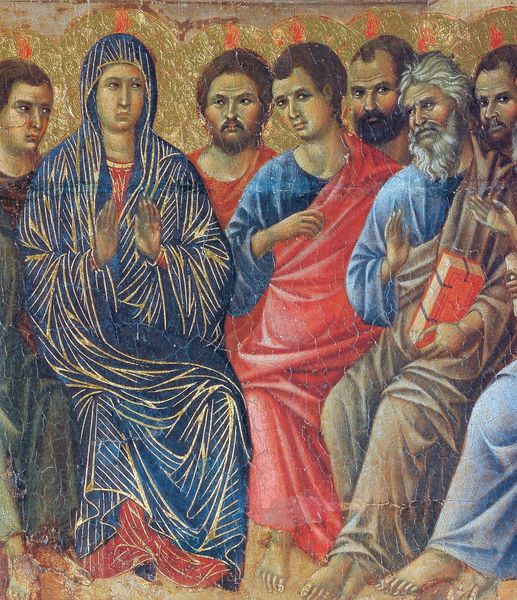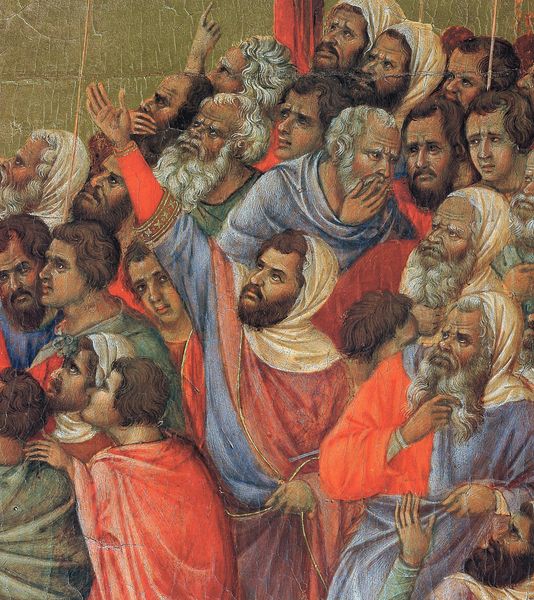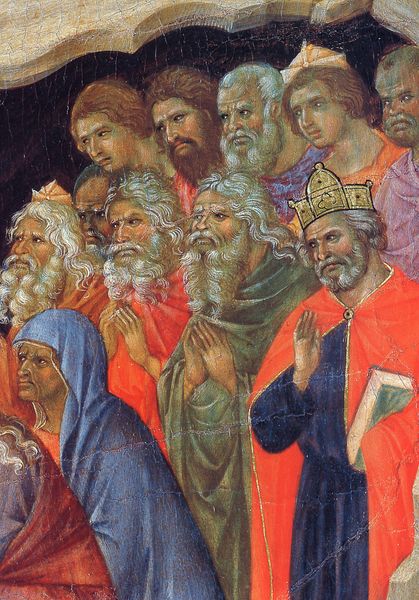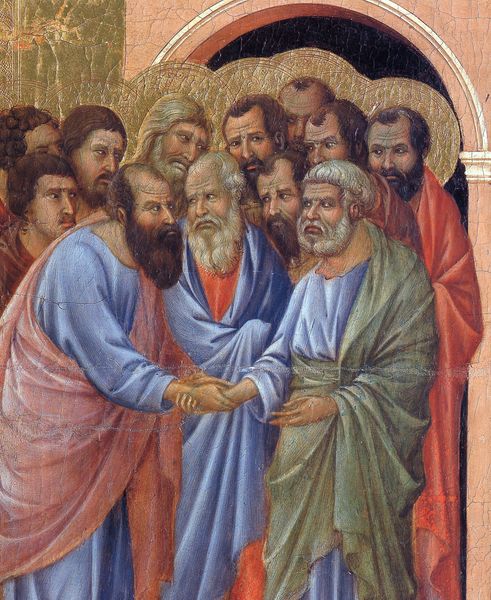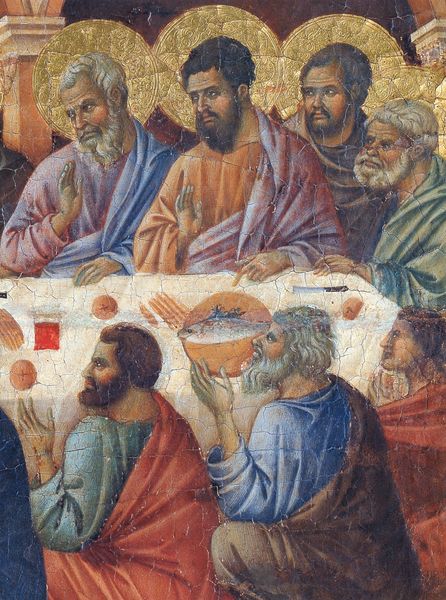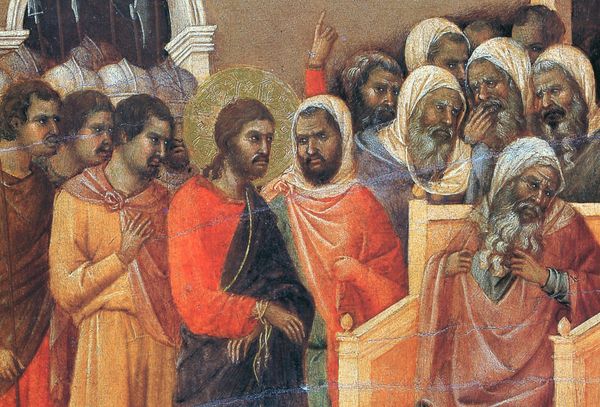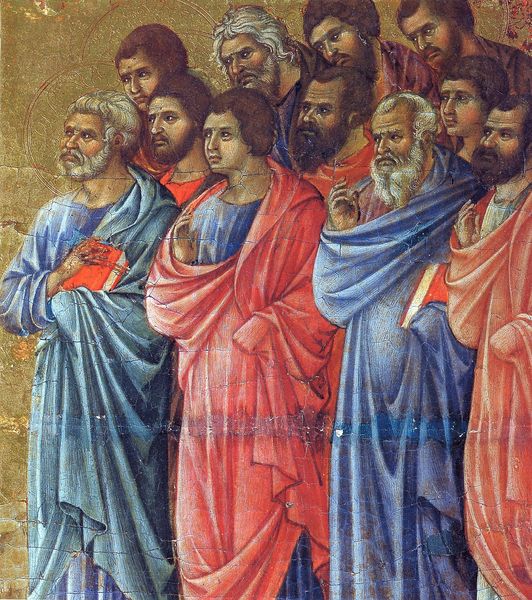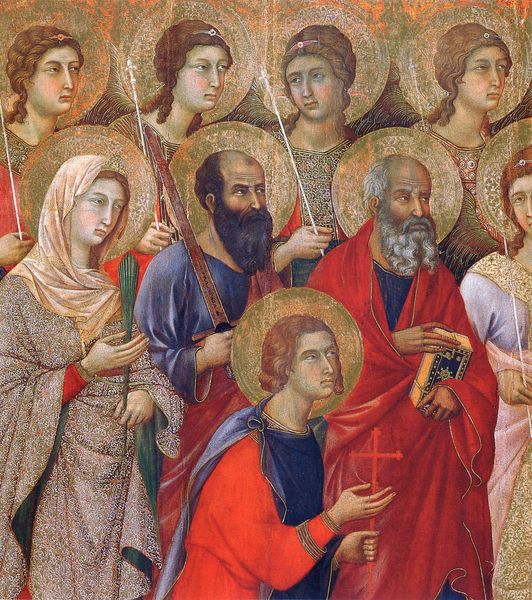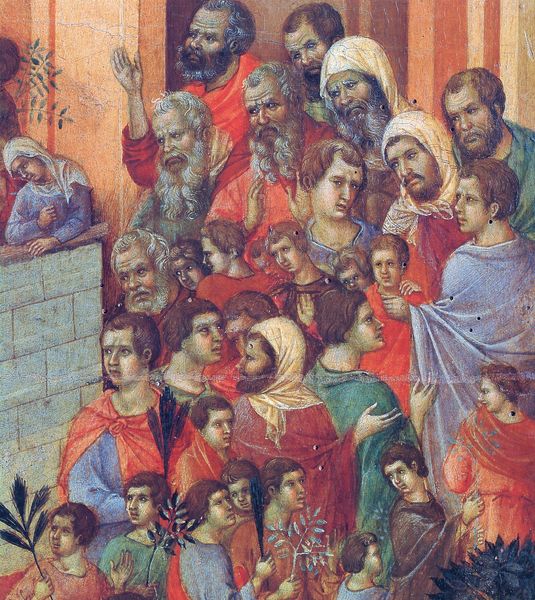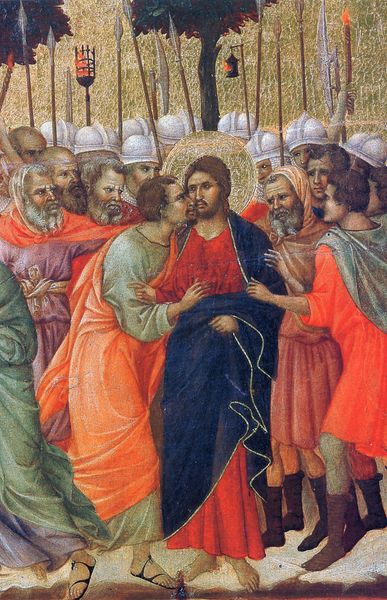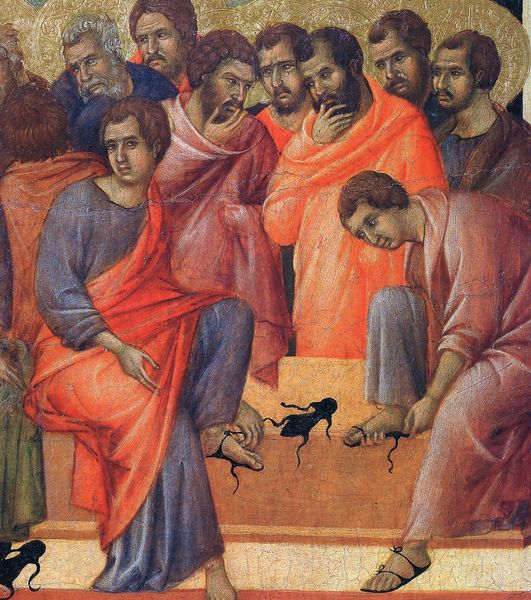
tempera, fresco
#
portrait
#
narrative-art
#
tempera
#
sienese-school
#
fresco
#
group-portraits
#
christianity
#
history-painting
#
italian-renaissance
#
early-renaissance
#
christ
Copyright: Public domain
Editor: So, here we have a fragment of "Christ Preaches to the Apostles" by Duccio, dating back to 1311. It's a tempera and fresco piece, and what strikes me is the intense focus on each individual face within the group. What's your take on this, in terms of how it was made and its cultural significance? Curator: What’s compelling here is considering the *how*. Tempera and fresco…laborious, demanding. Think about the guilds, the apprentices, the social structure embedded in its production. Early Renaissance wasn't just about aesthetic shifts, but material shifts, impacting who *could* produce art and for whom. Editor: Right, the economic aspect of creating sacred art at that time. Curator: Precisely. And fresco? Meant for a specific location, often public. How does this alter the accessibility and purpose of religious imagery compared to, say, smaller panel paintings made with tempera that might circulate among wealthy patrons? Did the labor of the artist help the people connect with it, too? Editor: So the fresco being in a fixed location directly serves the people because it provides wider accessibility. Were these paintings as revered, since there was more physical labor involved? Curator: Reverence takes many forms. Was it revered because of its direct social connection or because of who owned it, or even who created it? Early Renaissance masters became cultural commodities themselves, raising the price of skill as artistry gained more significance. Think of the interplay between devotion, skill, and commerce in creating a piece like this. The 'divine' becomes marketable, even dependent on human capital. Editor: That’s fascinating – considering the intersection of labor, materials, and this shift in social and economic value tied to art and its creators. Thanks; it's made me see it in a completely new way! Curator: It's all about unveiling those hidden layers beneath the image itself, right? Seeing art not just as image, but the labor it embodies.
Comments
No comments
Be the first to comment and join the conversation on the ultimate creative platform.
